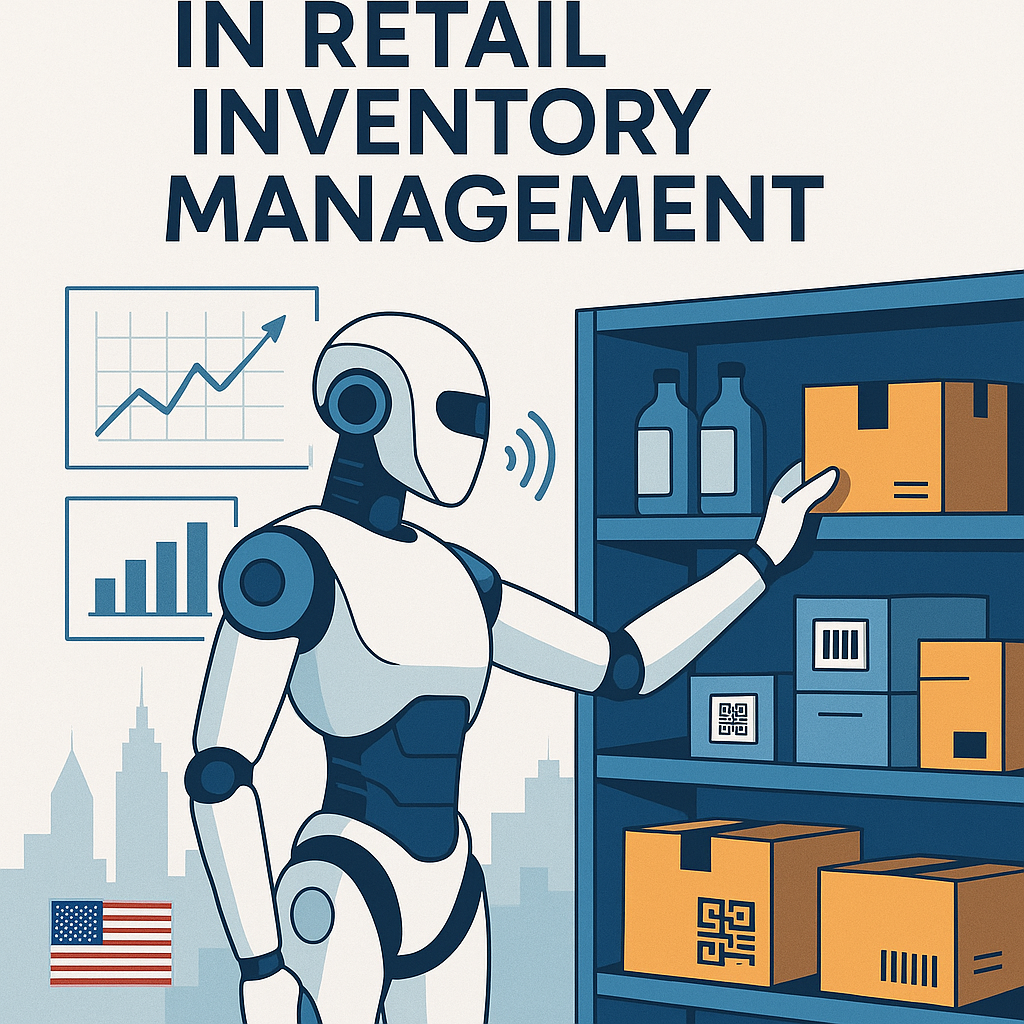
AI in Retail Inventory Management: Revolutionizing Stock Control in 2025
The retail industry in the United States is experiencing a technological revolution, and AI in retail inventory management is at the forefront. As we move through 2025, artificial intelligence is transforming how retailers track, replenish, and optimize their inventory. This comprehensive guide explores how AI is reshaping inventory management, the top solutions available, and what U.S. retailers need to know to stay competitive.
Understanding AI in Retail Inventory Management
Artificial intelligence (AI) refers to computer systems that can perform tasks typically requiring human intelligence, such as learning, reasoning, and problem-solving. In the context of retail inventory management, AI leverages data analytics, machine learning, and automation to streamline stock control, reduce costs, and improve customer satisfaction.
Why AI Matters for Retail Inventory in 2025
- 📦 Demand Forecasting: AI predicts which products will sell and when, minimizing overstock and stockouts.
- 🏬 Automated Replenishment: Smart systems trigger orders automatically, ensuring shelves are always stocked.
- 💡 Real-Time Insights: Retailers gain instant visibility into inventory levels across multiple locations.
- 💰 Cost Reduction: AI identifies inefficiencies, helping retailers save on storage and logistics.
TIP: Embracing AI-driven inventory management can increase profit margins by up to 30% for U.S. retailers in 2025!
Key Benefits of AI in Retail Inventory Management
1. Enhanced Forecasting Accuracy
AI algorithms analyze historical sales, seasonal trends, and external factors (like weather or local events) to predict demand with remarkable precision.
2. Reduced Stockouts and Overstocks
By continuously monitoring sales and inventory, AI minimizes the risk of running out of popular items or over-ordering slow movers.
3. Automated Inventory Tasks
Routine tasks such as reordering, stock audits, and shelf scanning can be automated, freeing up staff for higher-value activities.
4. Improved Customer Experience
With the right products always available, customers enjoy a seamless shopping experience, leading to higher satisfaction and loyalty.
5. Data-Driven Decision Making
AI provides actionable insights, empowering managers to make smarter purchasing and merchandising decisions.
Top 10 AI Solutions for Retail Inventory Management in 2025
Choosing the right AI-powered inventory management system can be challenging. Here’s a ranked list of the top 10 solutions making waves in the U.S. retail sector this year:
- SymphonyAI Retail
- Oracle Retail AI
- Blue Yonder (formerly JDA)
- SAP Integrated Business Planning
- IBM Sterling Inventory Control Tower
- Zebra Prescriptive Analytics
- Infor CloudSuite Retail
- Manhattan Active Inventory
- Relex Solutions
- SAS Intelligent Planning Cloud
Side-by-Side Comparison Table
| Rank | Solution Name | Key Feature | Best For | AI Capabilities |
|---|---|---|---|---|
| 1 | SymphonyAI Retail | End-to-end automation | Large retailers | Advanced ML, NLP |
| 2 | Oracle Retail AI | Predictive analytics | Omnichannel environments | Deep learning |
| 3 | Blue Yonder | Demand forecasting | Grocery & apparel chains | ML, real-time updates |
| 4 | SAP Integrated Business Planning | Integrated supply chain | Enterprise retailers | AI-powered planning |
| 5 | IBM Sterling Inventory | Visibility & optimization | Multi-location retailers | Cognitive analytics |
| 6 | Zebra Prescriptive Analytics | Actionable insights | Brick-and-mortar stores | Prescriptive AI |
| 7 | Infor CloudSuite Retail | Cloud-based management | Specialty retailers | AI-driven automation |
| 8 | Manhattan Active Inventory | Omnichannel fulfillment | E-commerce & hybrid | Real-time AI |
| 9 | Relex Solutions | Space & assortment planning | Grocery & convenience | ML, scenario modeling |
| 10 | SAS Intelligent Planning Cloud | Advanced analytics | Mid-sized retailers | Predictive AI |
TIP: When selecting an AI inventory solution, consider integration with your POS, scalability, and the quality of AI-driven insights.
How AI Transforms Retail Inventory Management Workflows
Automated Stock Replenishment
AI systems monitor sales velocity and trigger purchase orders automatically, ensuring optimal stock levels.
# Example: Simple AI-based reorder logic
if current_inventory < predicted_demand:
reorder_quantity = predicted_demand - current_inventory
place_order(reorder_quantity)
Real-Time Inventory Tracking
With IoT sensors and AI, retailers can track inventory movement in real time, reducing shrinkage and errors.
Dynamic Pricing and Promotions
AI analyzes inventory turnover and market trends to suggest price adjustments and promotional strategies.
Intelligent Shelf Management
Computer vision and AI-powered robots scan shelves, detect out-of-stocks, and alert staff for replenishment.
Challenges and Considerations for U.S. Retailers
While the benefits are substantial, implementing AI in retail inventory management comes with challenges:
- Data Quality: AI relies on accurate, up-to-date data for effective predictions.
- Integration: Legacy systems may need upgrades to work with AI platforms.
- Change Management: Staff training and buy-in are crucial for successful adoption.
- Cost: Initial investment can be significant, but ROI is typically strong within 12-24 months.
TIP: Start with a pilot program in a single store or category to measure impact before scaling AI solutions chain-wide.
The Future of AI in Retail Inventory Management
Looking ahead to 2025 and beyond, AI will continue to evolve, offering even more sophisticated tools for retailers:
- Hyper-Personalized Inventory: AI will predict demand at the individual store or even customer level.
- Autonomous Stores: Fully automated inventory management with minimal human intervention.
- Sustainability: AI will help reduce waste by optimizing order quantities and shelf life.
Conclusion
AI in retail inventory management is no longer a futuristic concept—it’s a present-day necessity for U.S. retailers aiming to thrive in 2025. By leveraging AI-driven forecasting, automation, and real-time analytics, retailers can reduce costs, improve customer satisfaction, and gain a competitive edge. The top AI solutions offer a range of features tailored to different retail environments, and the benefits far outweigh the challenges when implemented thoughtfully. As technology advances, embracing AI in inventory management will be key to staying ahead in the dynamic U.S. retail landscape. Now is the time to invest in AI-powered inventory solutions and transform your retail operations for the future.